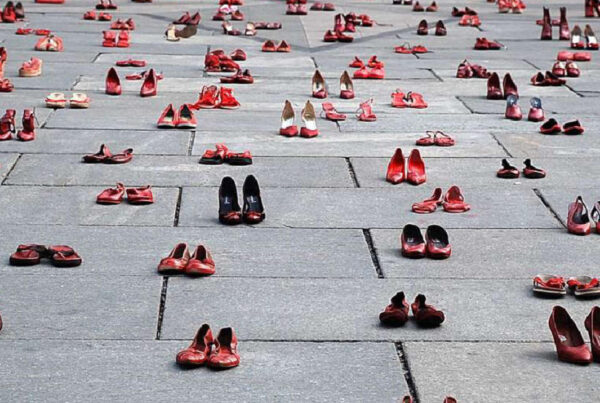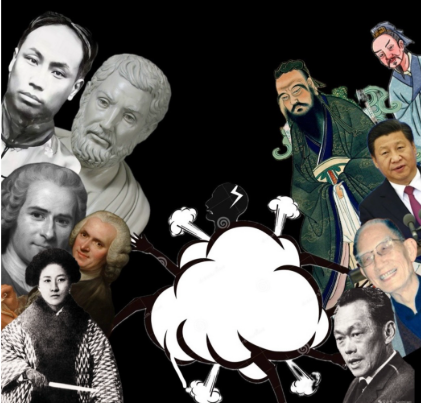By Joanna Lancashire
Amidst growing media and public concern relating to the plight of refugees, ranging in media rhetoric from the tentative ‘refugee question’ to a now unavoidable political crisis for developed governments; the UN Convention and Protocol relating to the Status of Refugees and the role of the United Nations High Commission on Refugees (UNHCR) are rising to the forefront as a central issue of debate. Over fifty years after its inception in 1951 as a response to a horrifically overlooked crisis, the convention has ceased to be a unifying instrument for policy crafting, and is instead being viewed as a relic of a bygone age, unequipped to deal with a drastically different situation. As the cornerstone for advising government action on refugees, the UNHCR competencies should be questioned and scrutinized in its competencies as an international regulatory authority to the standards of any good government, and from no where more than within the United Nations itself.
Following the events of the Second World War and a burst of collective guilt from Western governments for their deplorable actions concerning the plight of refugees fleeing the destruction of Europe and its atrocities, the Convention and Relating to the Status of Refugees (1951) sought to find a unifying touchstone of policy decisions., Considering the, score of an approximate ten million European refugees, such a step was imperative. Present policy decisions are faced with avery new situation, even if one considers only the estimated thirteen million refugees alone (in 2014) and not even addressing the highly disputed numbers concerning asylum seekers, internally displaced/stateless person and the ever popular “irregular migrant.”
The first and most obvious problem arises with an examination of the Convention’s understandably broad definition of a refugee. Article I specifies a refugee as a person who “ owing to well founded fear of being persecuted for reasons of race, religion, nationality, membership of a particular social group or political opinion, is outside the country of his nationality and is unable…or unwilling to avail himself of the protection of that country; … not having a nationality and being outside the country of his former habitual residence….is unable to.. or unwilling to return to it.” The main issue is the definition’s conflictual nature with regard to the rest of the content of the Convention, skimming over the obvious ambiguity of ‘well founded’ in the age of widespread multidimensional conflicts,. Regarding the issue of nationality, the historical context clearly provided the reasoning behind the definition: “unwilling to avail himself of the protection of that country..not having nationality… outside of his former habitual residence.” The focus on nationality and country of origin is a direct result of witnessing the atrocities of displaced groups across Europe, as a product of experiences of direct forced migration resulting from the Second World War; and in the emerging years past strong pro-nationalistic sentiments.
The burden for applying and determining the above definition is placed necessarily upon the institutions of the state. In light of the context from which most refugees find themselves fleeing, it is obviously not logical to place them in a circumstance of ‘false until proven real.’ The burden of proof is necessarily low. Today’s refugee crisis deals with an onslaught of challenges, not the least of which is the issue of distinguishability. Is it now necessary, considering the present global climate, to distinguish between those who have left for economic security and those who are fleeing violence? How can we determine this, and should they be treated differently? These are questions not addressed by a refugee convention crafted during an age in which displaced persons were almost always both. The terminology and provisions of the convention provide primarily only to those who have already reached their destination, and does little to account for the mass groups of internally displaced persons our world is now faced withThe convention equally fails to acknowledge a shift in paradigm pertaining to both migrational ability and classification. At the time of its creation, the idea of a refugee returning was improbable at best. In the present age, where boundaries of conflict are both permeable and constantly shifting; and peace is relative, the ideas of the Convention reflect an attitude tailored toward the single solution of permanent asylum, an outdated idea. The convention fails to acknowledge new political consequences: the expense in terms of resources, and more importantly, the backlash of the electorate faced by states to facilitate action on refugees. Nor does the binding power of the convention provide a framework to assist or reprimand states should they fail in their conventional obligations.
The lack of substantive legal binding power of the UNHCR and UN documentation in general is a well recognized one, but becomes of particular concern given the humanitarian crisis now faced in real time. The idea of determining refugee status in the age of recognized human rights under multiple legal treaties is essentially moot, a consequence of the developments in human rights law. The idea that there could be a plausible reason for which to force someone return someone to their home country under fear of persecution or death is extremely limited under multiple treaties including the European Convention on Human Rights, The Declaration itself, the Geneva Convention and the International Covenants on both Civil and Political Rights and Socio-Economic Rights,
Despite the supposably unifying power of the Convention and the Declaration itself, the idea of “collective responsibility”, is little more than flippant idealism. Is it feasible for an outdated and ineffectually enforced document to be the main touchstone for regional and global cooperation when dealing with, in many cases, multiple fronts of conflict and conflicting regional values? The crisis of refugees is greater than a collective moral responsibility; it is a case of political pragmatism. An issue that is only likely to worsen, it should not be looked upon as a case of simple statistics. Often overlooked is the fact that the convention deals with the daily reality of real people – and change to the convention it is a political choice that needs to be made on the foundation of a unifying document that is in keeping with both the attitudes and the issues now faced by global governance. Substance reflects principle – the Convention and Protocol relating to the Status of Refugees is not simply the ugly stepsister to the UN Declaration on Human Rights. If the United Nations Protocol is to be a legally binding, enforceable document, it should be subject to the same scrutiny as any law. There is principle, and there is practicality.
For the 1951 Convention, the age of practicality has come and gone. Any new order must ensure principles for which it once stood are not lost as well. The 1951 and 1967 protocols may be the only legal instruments relating specifically to the treatment of refugees, but that doesn’t mean they should be.
Previously published in A Different View, International Association of Political Science Students
Citations:
United Nations Convention and Protocol relating to the Status of Refugees (1951,1967)
http://encyclopedia.1914-1918-online.net/article/refugees
(http://www.unhcr.org/pages/49c3646c11.html
http://thediplomat.com/2015/07/southeast-asia-refugees-in-crisis/),
Other posts that may interest you:
- The Trouble with ‘Ecocide’
- Carbon dioxide removal – hit or miss?
- Local Victories for Turkish Opposition — A Sign of Hope?
- Are France and Japan a Mismatch Made in Heaven?
- A Reflection on Dark Tourism
Discover more from The Sundial Press
Subscribe to get the latest posts sent to your email.




